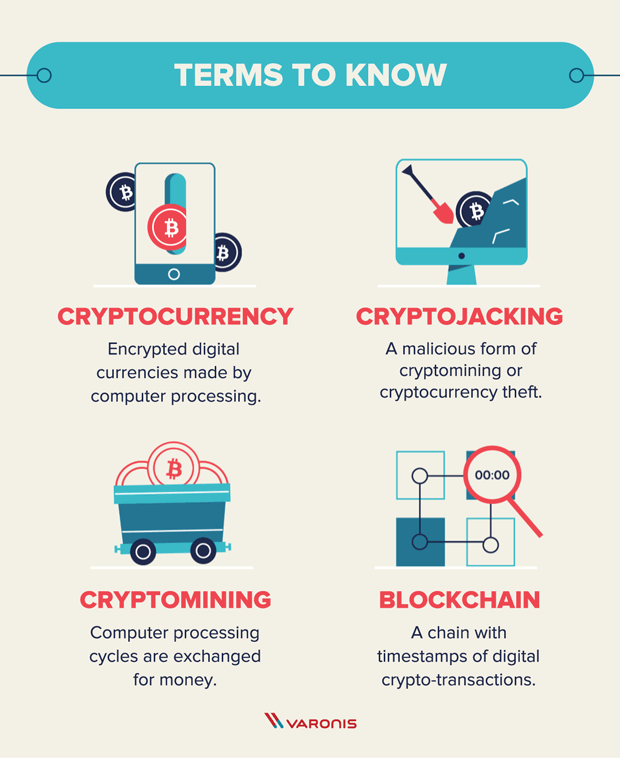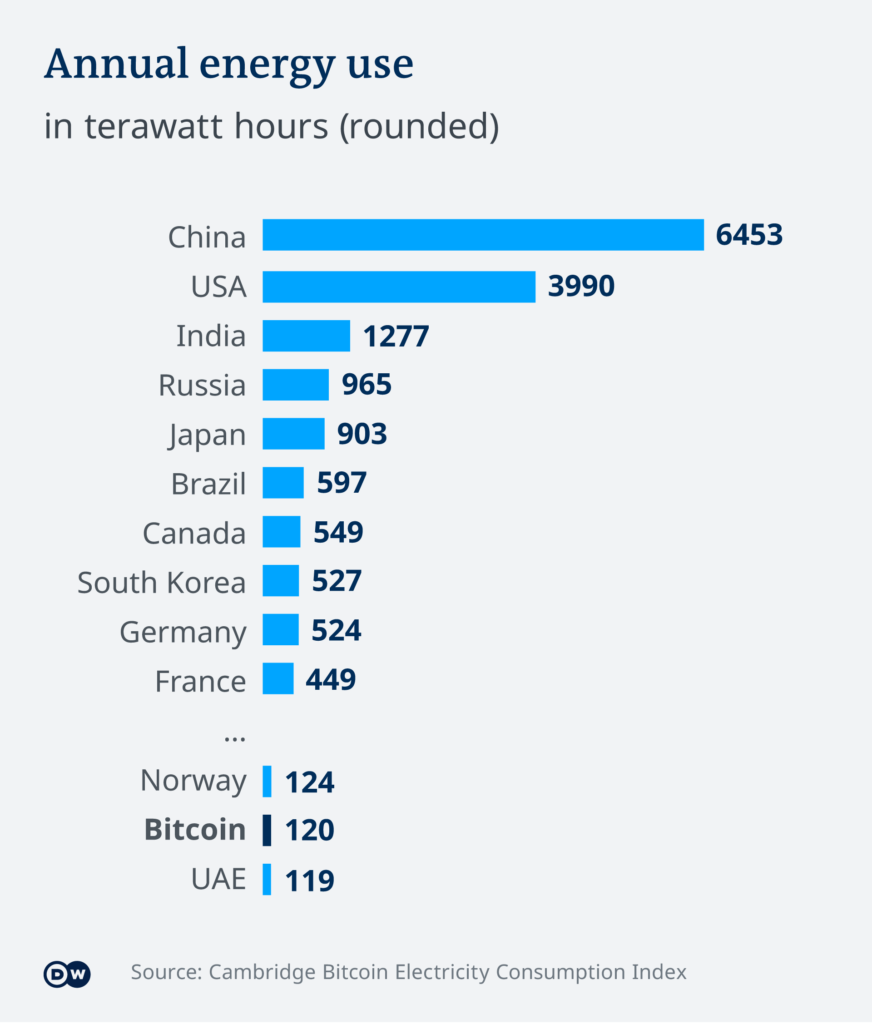
Bitcoin Energy Consumption Introduction
Cryptocurrency is a decentralized digital currency, it is meant for usage on the internet. There are many cryptocurrencies available today, such as Bitcoin, Ethereum, and Cardano. There are numerous benefits to using cryptocurrency. It works all over the world through the internet and becoming more popular in the market. Some economists think it could be the currency of the future. Bitcoin Energy Consumption is the amount of energy consumed in Bitcoin creation.

So Basically what is Cryptocurrency?
Cryptocurrency is digital money to be used only over the internet. But it’s decentralized, which means it’s based on a network that is distributed across a large number of computers. There is no central exchange like there is with traditional currencies around the world. It is safe from government interference.
- Decentralization enables investors to deal with each other directly, and there is no central body between them.
- Crypto is virtual, but it is not without power; it can buy houses or large properties.
- It’s secured by cryptography, so there is no chance of fraud.
- In 2008, Bitcoin was the first cryptocurrency to be released. There are many cryptocurrencies where people can invest; some have begun to gain popularity. Some are like Bitcoin, while others use different technologies.
- It’s interesting to know that no third person is required when someone transfers crypto between each other. It doesn’t need a bank or a government body, and it doesn’t matter what time it is because it works 24 hours a day, seven days a week.
- Crypto is clean and it is secured by blockchain, which is similar to a bank’s balance sheet. All currencies have their own balance sheet or blockchain. Since there is no central hub for crypto, the blockchain is spread out across the internet wherever there are participants in the virtual currency. Because
- Blockchain technology is used by all cryptocurrencies, there is no risk of a hack because it is constantly verified and checked by a large number of powerful computing systems.
- Using cryptography, there is no need to share personal details with the merchant. Privacy is not going to get compromised.

The History of Cryptocurrency
- The concept of cryptocurrency and its evolution can be traced back to 1989.
- As the idea began to take hold in the 1990s, cryptography began to develop its own set of rules. Additionally, the software began to come into existence with an idea to make a digital currency possible with a completely new concept of no bank or centralized body.
- Satoshi Nakamoto is thought to be the person who came up with the idea of bitcoin.
- Mining is how cryptocurrency is created, and the first mining of Bitcoin was done by a CPU in 2009.
- Because bitcoin was the only crypto available on the market at the time, the first commercial transaction took place in 2010.
- Litecoin is a new algorithm-based cryptocurrency that was launched in 2011. In 2013, Dogecoin was released, followed by ZeusMiner, Monero, and Vertcoin in 2014, and Etherium in 2015.
- In 2017, cryptocurrency started increasing. In January 2018, the value of all cryptocurrencies on the market reached $820 billion.
If there is one thing we can conclude from the very little history of cryptocurrency mining, it is that GPU mining will always exist.

What is Crypto Mining? Bitcoin Energy Consumption Explained
Mining is the process by which cryptocurrencies are made and transactions that involve new coins are checked and verified. Mining uses huge networks of computers spread all over the world by the internet. These computers check and protect blockchains by making sure they are correct. As a result, miners are rewarded with new coins in order to maintain their processing power wherever they are.
Mining basically does two things.
- Crypto Mining generates new cryptocurrency and does the verification to avoid any fraud.
- A miner is compensated upon completion of the process. One of the advantages of mining is that it creates new coins and verifies transactions, thereby boosting user confidence in the cryptocurrency.

How Does Crypto Mining Consume Energy? Bitcoin Energy Consumption
- Anyone with a good configuration of a computer at home can mine crypto.
- As cryptocurrency has grown in popularity, so has the use of blockchain. Processing such a large amount of data takes a lot of processing power.
- For this to be profitable, the value of the coins mined must be higher than the cost of mining those coins.
- Organizations or companies buy huge processing equipment and electricity to keep mining running smoothly.
- Therefore, cryptocurrency mining consumes electricity and necessitates a powerful computing system and the internet for its global expansion and sustainability.

What is a Bitcoin? Bitcoin Energy Consumption in Bitcoin Mining
- The domain was registered with the name bitcoin.org on August 18, 2008. In January 2009, Satoshi Nakamoto released the bitcoin software as open-source code.
- As of May 2022, the value of Bitcoin on the market was $576 billion.
- In the rest of the world, each country has its own rules about how to regulate cryptocurrency. As of December 2021, El Salvador was the only country in the world that accepted Bitcoin as legal currency.
- Bitcoins can be sent from one person to another through the internet, so there’s no need to go to a bank. They can be used by anyone in any country. You can use and store them as much as you want, and your account can’t be frozen.
- Bitcoins are stored in users’s digital wallet
- Using Bitcoins, anyone can buy books, games, servers, cars, houses, etc.
- There are several exchanges where anyone can trade bitcoins for other currencies like dollars, euros, etc.

How Does Bitcoin work? Bitcoin Energy Consumption
- Bitcoins are made on the internet by anyone who runs software called Bitcoin Miner on their computer. Bitcoin software is completely open-source; anyone can review the code.
- Mining is a job that requires the use of electrical energy. Because there is a cost associated with electricity, the Bitcoin network needs to contribute something in exchange for this electricity to constantly run.
- According to credible reports, Bitcoin consumes 0.55 percent of the total amount of electricity produced in the world.
- When Bitcoins are sent from one person to another, an electronic signature is added, and the transaction is checked by a miner and recorded permanently and anonymously in the network.
- Bitcoin is revolutionizing the financial industry but at the expense of increased electricity consumption. This comes at a cost because Bitcoin transactions require a constant supply of electricity.

The Future of Crypto Mining
- Bitcoin was the first cryptocurrency when it was introduced in 2009, and as of March 2022, there were more than 9,000 other cryptocurrencies available on the market.
- When more people are able to participate in the global market, more original ideas are going to emerge. Keeping this idea in mind encourages people to invest money in crypto globally.
- As computers need a steady supply of electricity to work online, cryptocurrencies like Bitcoin won’t need a lot of electricity, and the energy needed to run systems can also come from renewable sources. So, if cryptocurrency is the future, according to the market or economists, it must be better to run it on green energy sources.
- But despite this, it does have some negative effects on the environment, such as the requirement for high-end graphics cards in some systems. These cards are constructed from a wide variety of materials, many of which are mined or obtained in ways that are harmful to the environment.
- The fact that using fossil fuels to run cryptocurrency mining operations results in cheaper electricity for miners, which encourages them to use more fossil fuels overall, which in turn contributes to environmental pollution.
- Keeping in mind its growth and numerous benefits, cryptocurrency is a boon to many nations and businesses around the world, despite its drawbacks, which can be resolved in the near future.

Conclusion
The Bitcoin industry is thriving, and its growth is anticipated to continue. As the digital economy continues to expand at an accelerated pace, cryptocurrencies will undoubtedly play a substantial part in the future system of money. Using renewable sources of energy for crypto mining will be a good step toward a better environment.
- To collect information about Solar Energy- Click Here
- To visit the official website of the Indian Ministry of Power- Click Here
- To visit the Ministry of New and Renewable Energy- Click Here